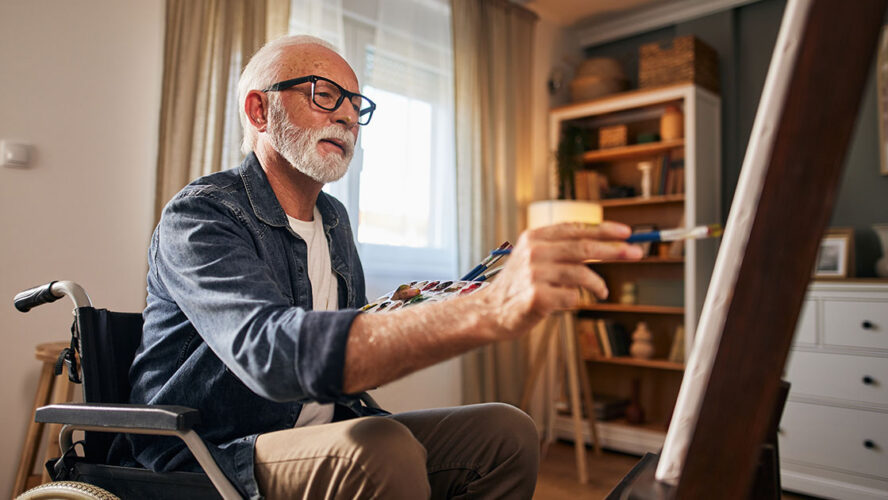“Aging in place” is more than a housing option; it is a fundamental expression of dignity, autonomy, and connection. For many older adults, it simply means the ability to live in the environment of their choice, surrounded by people they trust and love.

George Peraza-Smith, DNP, A-GNP-C, GNP-BC, GS-C, FAANP
Immediate Past President, Gerontological Advanced Practice Nurses Association (GAPNA)
While often associated with remaining in one’s long-time family home, aging in place encompasses a broader range of living arrangements, from urban apartments and retirement communities to shared homes with family or friends. The key is choice. That choice reflects, for many, a deep desire for continuity, community, and control in later life.
As a gerontological specialist nurse practitioner, I’ve seen firsthand how aging in place — when safe and thoughtfully supported — can lead to better health outcomes, greater life satisfaction, and prolonged independence. However, it requires a proactive, interdisciplinary approach integrating clinical, social, technological, and environmental strategies.
Home
At the core of aging in place is ensuring a safe, accessible living environment. Whether an older person lives in a suburban house or a downtown condo, the space must be adapted to meet changing physical and cognitive needs. Simple modifications — such as grab bars, no-step entries, adequate lighting, and lever-style doorknobs — can prevent falls and make daily tasks easier. Smart home technologies, such as motion sensors or voice-activated systems, offer additional support, especially for those managing chronic conditions or mild cognitive impairment.
However, safety is only one component. The emotional value of “home” also matters. A familiar neighborhood, access to cherished routines, and connection to neighbors can be as essential to well-being as any structural feature. Aging in place must also protect these less visible but equally powerful elements of an older adult’s sense of home.
Healthcare
For aging in place to succeed, healthcare must meet older adults where they are. This means more than occasional office or home health visits. It involves an integrated model of care — APRN gerontological specialists, nurse practitioners, geriatricians, social workers, and physical/occupational therapists working collaboratively to deliver preventative, acute, and chronic care in home and community settings.
The use of telehealth has become more common, especially for older adults with mobility limitations or who live in rural areas. But technology alone is not enough; trust and continuity matter. Longitudinal relationships with healthcare providers, especially those trained in gerontology, are essential in recognizing subtle changes in health, adjusting care plans early, and supporting complex decision-making.
Community
Isolation is one of the greatest threats to successful aging in place. Studies consistently link social isolation and loneliness to depression, cognitive decline, and increased mortality. Therefore, empowering older adults to remain socially connected is as critical as ensuring physical safety. Community programs, adult day services, volunteer opportunities, and intergenerational activities all play vital roles. Mental health support must also be accessible, destigmatized, and tailored to the unique experiences of aging, such as bereavement, role changes, and identity of self that often come with retirement or declining physical function.
Nutrition & mobility
Nutrition and mobility are foundational to living well at home. Malnutrition, whether due to limited income, poor appetite, or difficulty preparing meals, can derail an older person’s health. Community meals, home-delivered food programs, and nutrition education help address these risks.
Maintaining mobility is equally essential. Regular physical activity not only preserves strength and balance but also supports mental well-being and prevents functional decline. Occupational and physical therapy, when integrated early, can empower older adults with strategies to maintain independence in their daily activities.
As our population continues aging, we must shift our systems to support where and how people want to live. Aging in place is not a luxury; it is a practical, person-centered goal that reflects the values of independence, purpose, and belonging. Policymakers, clinicians, caregivers, and communities all have a role in making this possible. By investing in the infrastructure, healthcare models, and social systems that allow individuals to thrive at home, we honor their preferences and the full spectrum of what it means to age well, with dignity, safety, and choice.

